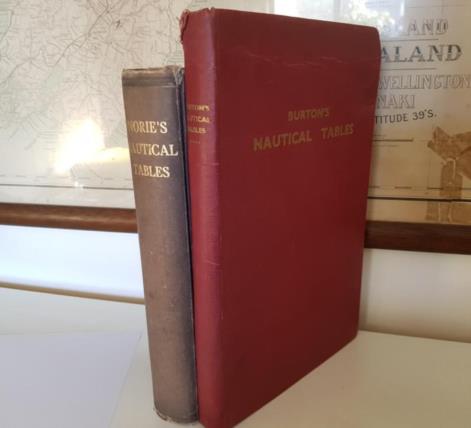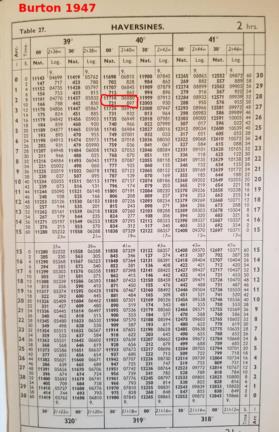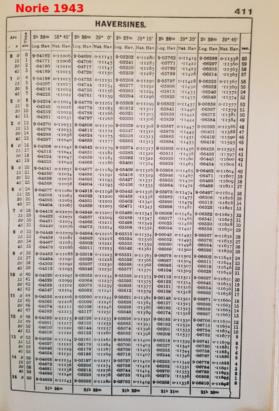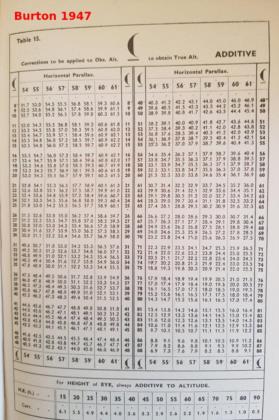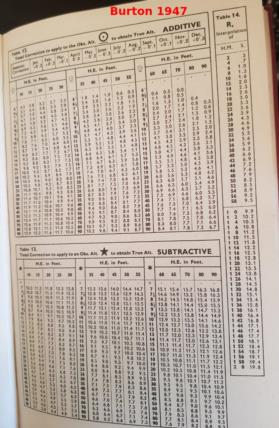
NavList:
A Community Devoted to the Preservation and Practice of Celestial Navigation and Other Methods of Traditional Wayfinding
From: David C
Date: 2020 Jul 25, 20:07 -0700
Lars wrote
I have used Burton's tables for the last forty years and like it. It has a clear layout and is made primarily for sight reduction using the cosine-haversine method for altitude and ABC-tables for azimuth. It of course also contains traverse tables and other commonly used tables. For the history of the tables, refer to enclosed file, "The Gestation and Birth of my Nautical Tables" which appeared in the (British) Journal of Navigation, vol. 15, no. 4, in 1962.
I purchased a copy of Burton's tables on July 1. Much to my surprise, and despite Covid-19, it arrived from the UK just three weeks later by standard post. In his 1962 article Burton gives two reasons for publishing the tables in the 1930s. Firstly it was well over 100 years since a new volume of tables for general sea use had been produced. Secondly existing nautical tables of the time were (in Burton's opinion) far too voluminous and were ill-arranged for tools of navigation. Burton also spoke of the high blunder ratio among navigators. My copy of Burton was issued in 1947. I decided to compare it with a 1943 edition of Norie.
Norie is 663 pages. Burton is 260 pages plus a 31 page supplement extending ex-meridians and ABC tables to latitude 82°.
Both sets of tables are intended for the haversne method for altitude and the ABC method for azimuth, with haversine, log trig and ABC tables.
In the haversine table Burton creates white space by omitting the leading three digits of every second entry. Maybe tjhis makes the tables easier to read?
Burton uses a sans serif font for digits whereas Norie uses serif. In the notes to Hughes' Tables L J Comrie discusses the best type of font to use in tables and seems to prefer serif fonts.
Burton includes correction tables for the sun, moon and stars. Given that these values do not change yearly it seems logical (to me) for them to be included in the mathematical tables rather than the almanac.
Finally, in this era of the hand held super computer (as Frank calls it), GNSS and $29 inkjet printers on everyone's desktop I realise that this completely irrelevant. But............it is extremely interesting........
